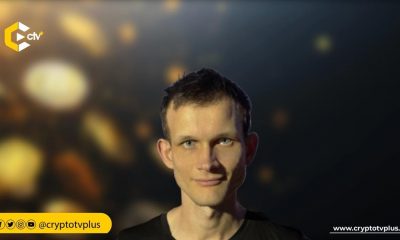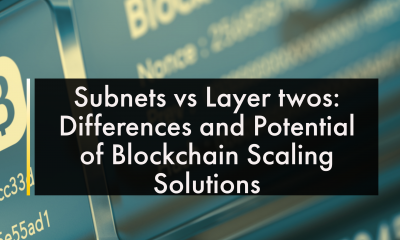DeFi
The weight of L2 systems on the cost of Ethereum gas

Ethereum, the second-largest cryptocurrency by market capitalization, is a decentralized platform that enables the creation of smart contracts and decentralized applications (dApps).
One of the key features of Ethereum is its use of gas, a measure of computational effort required to execute a specific action on the Ethereum network. Gas is measured in units of Ether (ETH), and the cost of gas is an important factor to consider when using Ethereum.
Recently, there has been a significant increase in the use of Layer 2 (L2) scaling solutions on the Ethereum network. L2 solutions are designed to offload some of the computational workloads from the main Ethereum blockchain (Layer 1 or L1) to a separate layer, thus increasing the overall scalability and reducing the cost of gas. These L2 solutions include but are not limited to;
- State channels,
- Plasma chains, and
- Rollups.
State channels are one of the most popular L2 solutions. This solution allows for off-chain transactions between two parties without the need for each transaction to be recorded on the main blockchain. The transactions are recorded only when the channel is closed, and the final balances are recorded on the Ethereum blockchain. This reduces the need for gas, as the transactions are not recorded on the Ethereum blockchain, thus reducing the cost of gas.
The way state channels work is by setting up a direct, peer-to-peer channel between two parties. This channel is maintained outside the Ethereum blockchain, but the terms of the channel are secured by smart contracts on the Ethereum network. When the parties agree to transact, they can exchange digital assets or execute smart contract functions without the need for each transaction to be recorded on the Ethereum blockchain. This significantly reduces the cost and time involved in executing transactions, as there is no need for each transaction to be verified and recorded by the network.
State channels are particularly useful for dApps that require frequent, small transactions, such as micropayments or high-frequency trading. An example of this is the Lightning Network for Bitcoin, which uses state channels to enable fast, low-cost transactions.
Another popular L2 solution is Plasma chains. These are separate blockchains that are connected to the main Ethereum blockchain. Plasma chains allow for the creation of child chains that can handle their own transactions, which are then recorded to the main Ethereum blockchain.
Plasma chains work on the principle of creating separate, smaller blockchain networks (known as child chains) that are connected to the main Ethereum blockchain (known as the root chain). Transactions are processed on these child chains and the results are recorded to the root chain through a process called “commitment“.
This allows for a high volume of transactions to occur without putting strain on the root chain, as the child chains handle most of the computational workload. The child chains also have their own set of rules and consensus mechanisms, which can be tailored to the specific needs of the dApp or use case. By offloading some of the computational workload from the root chain to these child chains, plasma chains help to increase the scalability and reduce the cost of gas on the Ethereum network.
Plasma chains are particularly useful for dApps that require high throughputs, such as decentralized exchanges or games. An example of a Plasma chain is the OMG network, which is an Ethereum scaling solution that uses Plasma to enable faster, cheaper transactions for decentralized exchanges.
Rollups are a new type of Layer 2 scaling solution that is gaining popularity. They work by “bundling” multiple transactions together and recording them on the main Ethereum blockchain in a single transaction.
In a roll-up, transactions are grouped into a single “roll-up transaction” and recorded on the Ethereum blockchain as a single, compact representation of many individual transactions. This bundling of transactions allows for the processing of a large number of transactions in a single block, thereby increasing the efficiency and scalability of the Ethereum network. This reduces the number of transactions recorded on the main blockchain, thus reducing the cost of gas.
The roll-up transactions are verified by a smart contract on the Ethereum blockchain, ensuring the integrity and security of the transactions. The smart contract also allows for the tracking and management of the bundled transactions, ensuring that they can be efficiently executed and settled.
Rollups are particularly useful for dApps that require high-throughput and low-cost transactions, such as decentralized exchanges or financial applications. An example of a roll-up solution is Optimism, which is a roll-up scaling solution for Ethereum that enables faster, cheaper transactions for dApps.
Conclusion
Overall, L2 scaling solutions have a significant impact on the cost of gas on the Ethereum network. By offloading some of the computational workloads from the main Ethereum blockchain, L2 solutions reduce the need for gas, thus reducing the cost of gas. This makes Ethereum more accessible to a wider range of users and opens up new opportunities for decentralized applications.
However, it’s important to keep in mind that L2 solutions are still relatively new, and there may be some challenges along the way. It’s important to stay informed and understand the implications of L2 solutions in order to take advantage of the benefits they provide.
What do you think of this article? Share your comments below.

























1 Comment